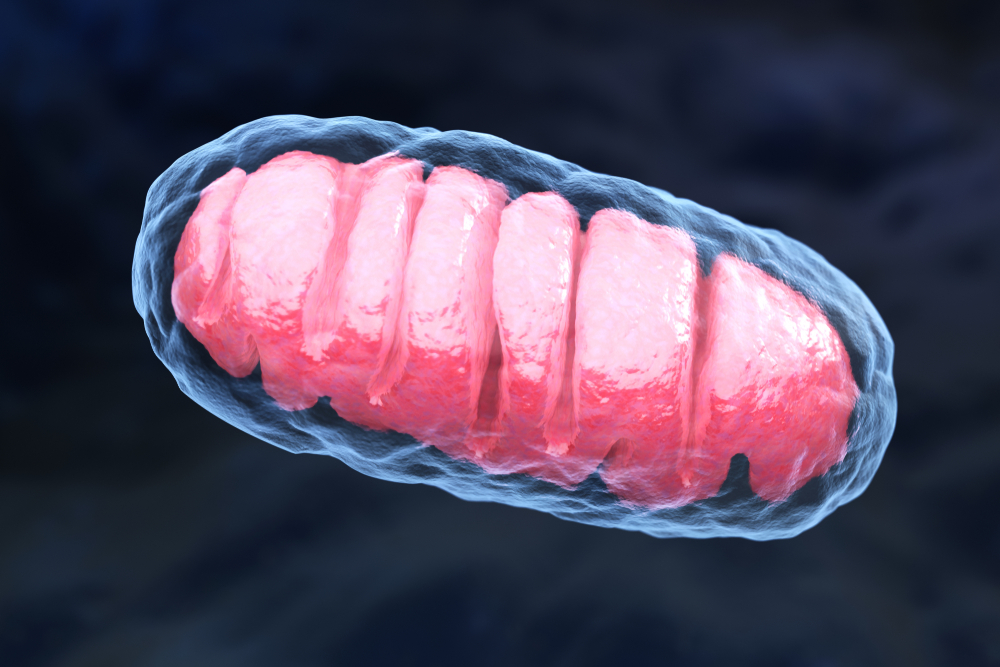Mitochondrial ‘Suicide’ May Signal Start of Neurodegeneration in ALS, Mouse Study Suggests

A newly discovered self-destructive mechanism in mitochondria, the cells’ powerhouses, may be one of the first deficits leading to motor neuron degeneration associated with toxic TDP-43 clumps — a hallmark of amyotrophic lateral sclerosis (ALS).
That evidence from a preclinical study suggests available therapies against mitochondrial degeneration might help halt neurodegeneration in ALS.
The study, “Mitoautophagy: A Unique Self-Destructive Path Mitochondria of Upper Motor Neurons With TDP-43 Pathology Take, Very Early in ALS,” was published in the journal Frontiers in Cellular Neuroscience.
Accumulation of toxic TDP-43 aggregates inside diseased nerve cells is a distinctive trait of ALS. TDP-43 is a protein that regulates RNA, a molecule generated from DNA that serves as a template for the production of a specific protein.
These TDP-43 clumps have been found in 90% of patients with sporadic ALS, and in ALS patients with mutations in several ALS-associated genes, including TARDBP (which has the instructions to produce the TDP-43 protein) and PFN1. Interestingly, these clumps are rarely seen in patients with mutations in the SOD1 gene, which account for 12–20% of familial ALS cases.
Increasing evidence suggests that degeneration of upper motor neurons — those located in the brain and send messages to the spinal cord — is an early event in ALS, occurring much sooner than symptom onset.
Researchers at Northwestern University Feinberg School of Medicine have recently found that upper motor neurons of ALS patients with TDP-43 clumps and mice with TARDBP mutations shared similar deficits, including problems in mitochondria, the cells’ “powerhouses.”
“However, the timing and the extent of mitochondrial defects, and their mode of degeneration have not been revealed,” the researchers wrote.
Now, the same team evaluated the features of mitochondrial dysfunction in upper motor neurons of three mouse models of ALS — mice with mutations in the TARDBP, PFN1, or SOD1 genes — very early in life (15 days old, equivalent to a toddler in humans), when there is no sign of neuron degeneration or behavioral problems.
Researchers analyzed the cellular events happening inside brain neurons of the three different ALS mice and of healthy mice, using a technique called “immuno-coupled electron microscopy.”
Results showed that at this early age, upper motor neurons of all three ALS mouse models already presented numerous structural defects in mitochondria. On the contrary, neurons of healthy mice and neurons other than upper motor neurons in ALS mice had normal mitochondria, suggesting that mitochondrial defects are restricted to upper motor neurons at this stage.
A close examination of mitochondria’s features in a total of 226 neurons of the three ALS mouse models and healthy mice revealed the presence of “a novel self-destructive path of mitochondrial degeneration, which we named mitoautophagy,” the researchers wrote.
This unique self-destructive path involved mitochondria’s elongation and the formation of a ring-like structure before its disintegration, which was independent of normal degeneration-associated processes and cellular structures.
Mitoautophagy was found only in upper motor neurons of ALS mice, particularly those with TARDBP or PFN1 mutations, supporting an association between ALS with TDP-23 toxic aggregates and mitochondrial dysfunction.
“The mitochondrial abnormalities detected during post-natal development could indeed be one of the first defects that lead to upper motor neuron vulnerability especially within the context of [TDP-43-associated disease],” the researchers wrote.
“I think we have found the culprit that primes neurons to become vulnerable to future degeneration: suicidal mitochondria,” Hande Ozdinler, PhD, the study’s senior author, said in a press release.
“The mitochondria basically eat themselves up very early in the disease” Ozdinler stated, adding that this occurs “selectively in the neurons that will soon degenerate in patients’ brains.”
Mukesh Gautam, PhD, the study’s lead author, said “this type of degeneration begins much earlier than previously thought.”
The team now is working with drug companies to investigate whether available therapies for diseases associated with mitochondrial dysfunction can halt motor neuron degeneration.
“Many of the drugs currently on the market that target the health and the integrity of mitochondria may well be repurposed and considered for neurodegenerative diseases in the future. Maybe we don’t need to reinvent the wheel to cure ALS and other neurodegenerative diseases,” Ozdinler said.






